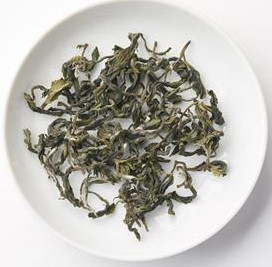Bi-Lo-Chun tea
Bi-Lo-Chung tea is non-fermented tea. On Taiwan specialty tea flavor wheels, it belongs in the category of Taiwan green tea. In the traditional manufacturing process, green tea does not go through the processes of withering and stirring. Its manufacturing process is: fresh tea leaf→panning→rolling→mass breaking→drying. However, although Bi-Lo-Chung is a pan-fired green tea, farmers will ordinarily spread out the fresh tea leaves and leave them out for several hours in order to improve their flavor.
The Sanxia District of New Taipei City is adjacent to Xindian, Tucheng, Shulin, Yingge, and Daxi, and is therefore connected to the Wenshan tea growing area. It is the only remaining production area in Taiwan specializing in pan-fired green tea. The tea plants are mainly of the Chin-Shin-Ganzai and Chin-Shin-Oolong varieties. The area of cultivation is the land surrounding the peak of Mt. Baiji, where it is misty and foggy, the climate is cool and refreshing, and the soil quality is excellent. Farmers in the Sanxia area have been cultivating tea for over 200 years. Just before Qingming Festival when the tea grows to the “one tip three leaves” condition, they hand-pick the “one tip two leaves” tender shoots to make Bi-Lo-Chung tea; this is when the shape, color, fragrance, and flavor are at their peak. Bi-Lo-Chung tea is a fresh deep green in appearance. The buds have many white pubescences. The shape is a tight spiral. The dried tea has a delicate fragrance and is bright and natural. The steeped tea is of a limpid green color, and has a refreshing taste, giving the tea a unique quality of its own. The production season for Bi-Lo-Chung tea lasts from March through December each year, with the highest quality tea being produced from March through May and from October through December.
|
|
|



